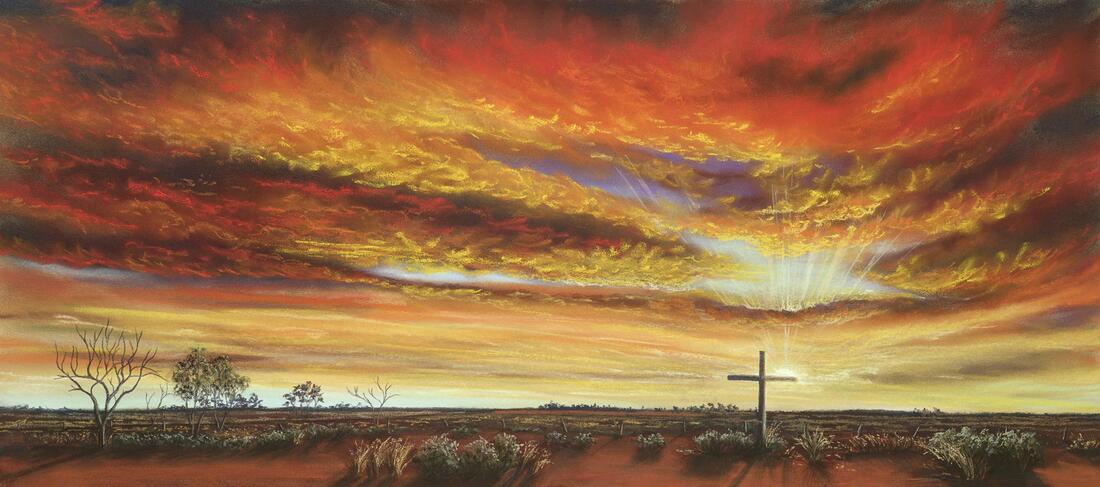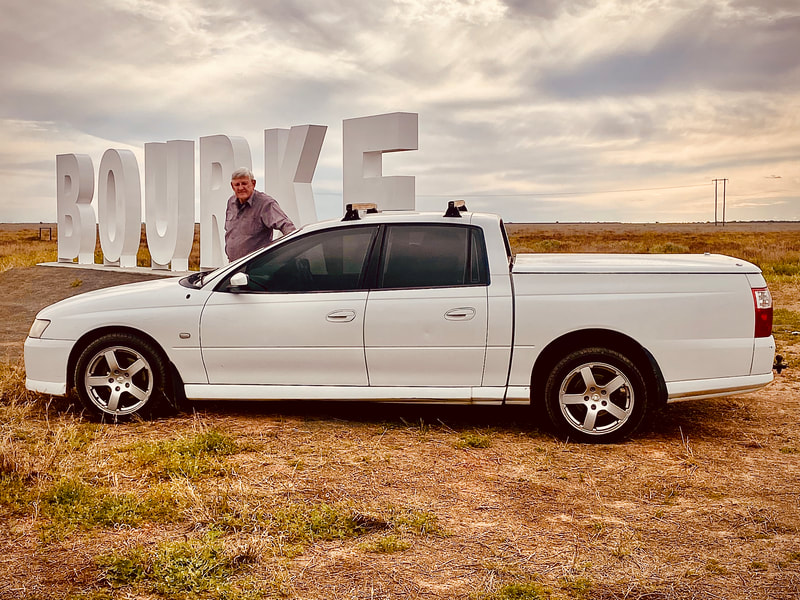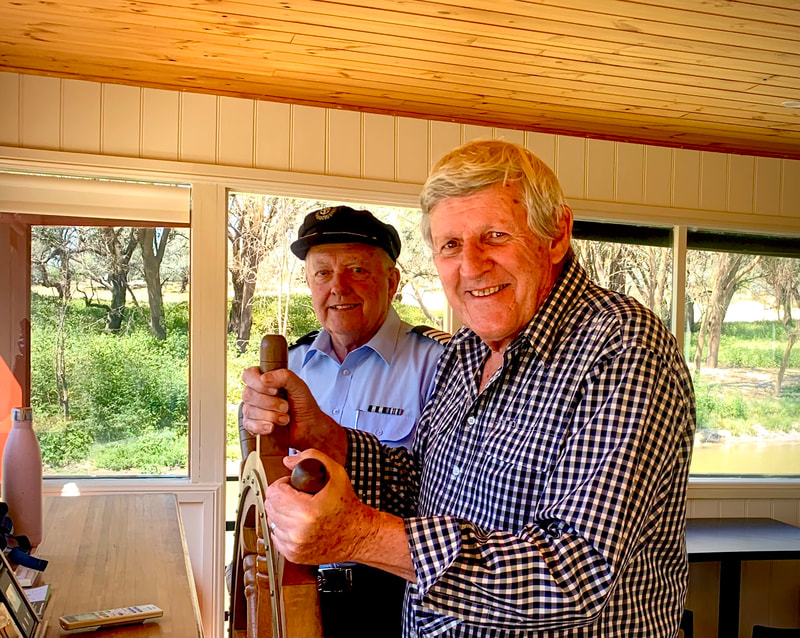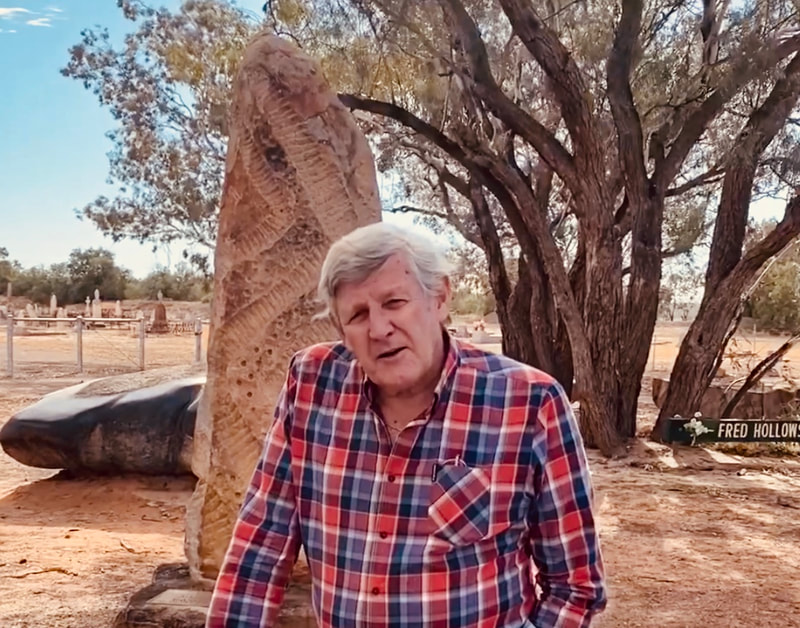|
You could say Easter arrived on the banks of the Baarka/Darling River on Feb 28th 1828 when Hamilton Hume sat in front of the perplexed Aboriginal tribe and threw down a branch as a sign of peace. The young home-grown explorer was a man of faith, as was expedition leader Captain Charles Sturt. Together, they relayed compassion for a people who they saw were afflicted with smallpox. Their impeccable record in relating to the native people wherever they journeyed mirrored the teachings of Jesus. Easter has arrived on the Western plains in many different forms since then. Those who brought it weren’t all saints, but they were real. Early settler Vincent Dowling narrowly escaped spearing on the Paroo River in the 1860’s. Later, when his brother John was killed the same way, in the spirit of the man who forgave his enemies from the cross, Vincent did not seek retribution. The font he gifted to the Bourke Anglican church speaks of his Easter faith.
In the early days, men of the cloth battled with distances and sparse population, some like Bush Brother Charles Matthews making prodigious efforts in the heat on horseback to bring pastoral care to a parish the size of England. Priests celebrated Easter in lonely homesteads with farm families or at railway sidings with workers. Sometimes they broke bread by a swagman’s campfire out on the track. Big-hearted women like Mother Mary Mackillop and Mother Theresa called sisters to leave their home-countries to travel sometimes half-a-world to serve the people of Bourke. For over a century, women like this have tried as best they could to bring the Easter message to homes and schools throughout the West. A number died here, a long way from home. In the 80’s, uniformed Salvo’s drummed hymns into the ears of patrons at The Carriers Arms Hotel. Teamsters and shearers spread North and South with the message of Easter ringing in their ears. Henry Lawson was there and later penned a poem, The Christ of The Outer Outback, saying he met Easter personified out on a lonely track in an itinerant preacher Peter Mc Laughlin. “Plain spokesman where spokesman is needed, rough link ‘twixt the bushman and God’.” In the tumultuous 1890’s, William Spence, Australia’s greatest union organiser, came to Bourke recruiting members for the Shearers’ Union. He was a devoted follower of Jesus and his goal was to make his religion practical for the working men. He left the stamp of Easter on the labour movement of those days. Opposing him at the time was leader of the Pastoralists Union, Samuel McCaughey, a brilliant inventor and entrepreneur. Like Spence, the owner of Toorale/Dunlop stations was a man of faith, active in the Presbyterian Church and possessing a generous heart. One of his expression of the spirit of Easter was a scheme which eventually helped over 20,000 children of WW1 soldiers and sailors with schooling or training for trades and professions. In the 1920’s, Western families living in isolated homesteds experienced Easter in the shape of Rev Stanley Drummond and his wife Lucy; arriving in their badly beaten-up Vauxhall to take their sick or crippled children to Sydney for treatment and a holiday at the Far West Children’s Hospital at Manly. At other times of need, while they may not have realised it, the drone of the approaching Flying Doctors’ aeroplane was Rev John Flynn’s Easter hymn for the Inland. The Easter message arrived at stations at the top end of the Darling in the early part of the 20th century with the beat of paddlewheels of the PS Nile and PS Jandra. Riverboat men Wally and Herb Brown carried an organ on board and held services for settlers and itinerants. Likewise, 1930’s pioneer civil rights activists William Ferguson, Bill Reid and Jimmy Barker reminded the outback of the call for justice that lies at the heart of the Easter message. More recently, other Aboriginal leaders like George Mungindi, the Doolan family, George and Shelley Mann and Phil Sullivan have preached and lived out that story in the streets of Bourke. One of the highlights of my life has been the unique Easter Sunrise Service that began on Jack Buster’s property, under the great cathedral dome of sky at the back of Bourke in the 1970’s. Since then, thousands have listened to the extraordinary narrative of Jesus’ resurrection being read from the gospels on chilly autumn mornings and it never seems to lose its impact. I’ve spent 50 years teaching as a historian, much of it to the hundreds of students who came to Cornerstone in Bourke from all over Australia and across the world. I’ll be back in Bourke this Easter telling many of its extraordinary stories in the graveyard, where a forest of crosses bear mute testimony to the hope generated by ‘The Greatest Story Ever Told’. I’ll spend Easter weekend recounting stories on the P V Jandra, at the Exhibition Centre and in the cemetery. I love telling them eye to eye. So many of them are the stories of men and women energised by the robust Easter narrative. There’s overwhelming evidence it’s influence is not restricted to church buildings and special days. It’s affected all of life. I happen to know Bourke’s history – but I also know it’s just one of a myriad of towns across Australia shaped by the crucifixion of a young man from a country town, outside the city wall of Jerusalem 2100 years ago. Don’t our calendars testify to that? John Flynn swept aside the accusation that belief in another world robbed men and women of purpose in this world. On the contrary, he argued these people have a track record of bringing positive change across Australia. ‘Always those who are most deeply moved by the Risen Jesus are found in the front ranks.’ (The Bushman’s Companion) Bourke has experienced that the length of its history. The cover image to this blog is an artwork by Jenny Greentree, www.backobourkegallery.com.au
3 Comments
Chris Gilbert
3/30/2024 05:35:36 pm
Great round up of the stories of men and women fearless to offer thanksgiving sacrifice because of the One we remember Easter Sunday arisen from a borrowed grave!
Reply
Chris. I was speaking to backpacker from Chile in Bourke yesterday. He was troubled. “Why is so much time spent this weekend doing party things when we should be thinking about the Easter story and what it means?” Good question! He was hungry for answers about meaning and purpose.
Reply
Geoffrey Bullock
3/31/2024 05:27:45 pm
Another great story, Paul! Thanks for your commitment to bring the truth of the Good News to the Outback!
Reply
Leave a Reply. |
AuthorJoin The Outback Historian, Paul Roe, on an unforgettable journey into Australia's Past as he follows the footprints of the Master Storyteller and uncovers unknown treasures of the nation. Archives
October 2023
Categories
All
|
|
Sponsored by
|
Privacy Policy
|
|
Copyright 2020 by The Outback Historian
|
Site powered by ABRACADABRA Learning
|





 RSS Feed
RSS Feed

